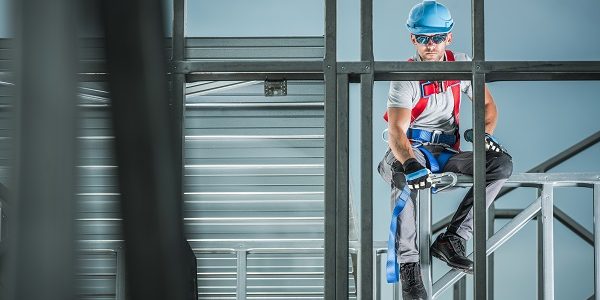Working at heights introduces a whole different level of risk that cannot be calculated and examined by normal workplace safety standards. Those who specialise in working at height often train for many years and even with a lot of experience they can’t get too certain about their safety while hanging above ground with nothing but a rope to support. Even if the work is done with scaffoldings or cranes, workers that are above ground face a whole other set of risk factors from which they must be protected by their employers. What are some technical difficulties and dangers while working at height?
Falling down is never safe
The most obvious and, by far, the most serious risk that workers at height face everyday is the risk of falling down. Even with the best preventative measures and certified safety equipment provided by their employer can’t ensure a 100% safety while working at height. There’s so many things that can go wrong.
The risk of falling down is common in construction, repairing, servicing and other industries that require working off the ground. With that in mind, providing a clear guidance for companies that prepare safety equipment, training the workers regularly and always keeping the risk in mind is of utmost importance. If there’s one thing that can never fail for workers at height, it’s their awareness of the risk that is involved in the job and all the preventative measures that can be taken to reduce that risk.
Tough road to the top
Some workers don’t have to work high above the ground to be at risk of injuries associated with working at height. The transition hazard is a real concern for many industries as some workers have to get to their safe workspace by moving off the ground and getting to the next level. This may include scaffolders who are always on the move and it’s their job to ensure safety of others. An unsteady ladder, equipment failures, slipping risk, wrong use of safety lines – many things can go wrong and there’s little that can be done about it once the accident happens.
How workers can ensure their safety? First of all, it’s the employers role to get the best and safest equipment there is to prevent workers from the risk of falling. Choosing certified, quality safety lines, helmets, safety belts etc. will be crucial if the work is to be done safely. Getting certified as a company is also a great idea – there are many standards that focus on eliminating unnecessary risks and help implement best practices for any task that has to be done at height. Compliance gives the employers the opportunity to better prepare their workers for the job at hand and gives the companies a solid ground for better insurance coverage and protection of their workers.
Relying solely on the safety equipment isn’t enough to get workers at height to perfect safety level. There will always be risks involved with working in such conditions and the only way to reducing them is to just take care of the workers, eliminate the risks that can be eliminated and always keep control over jobs being done without the support of a solid ground.





